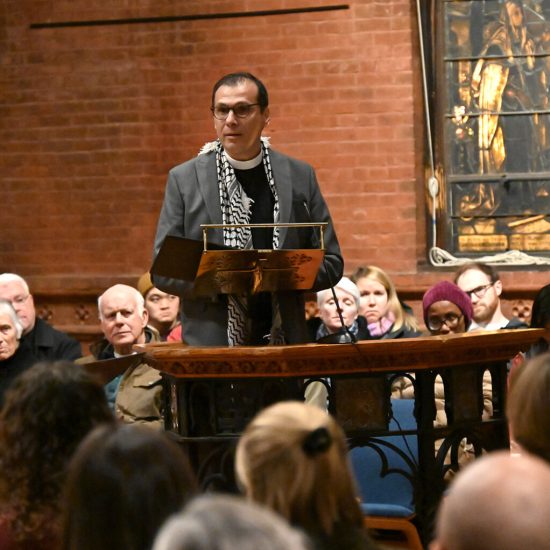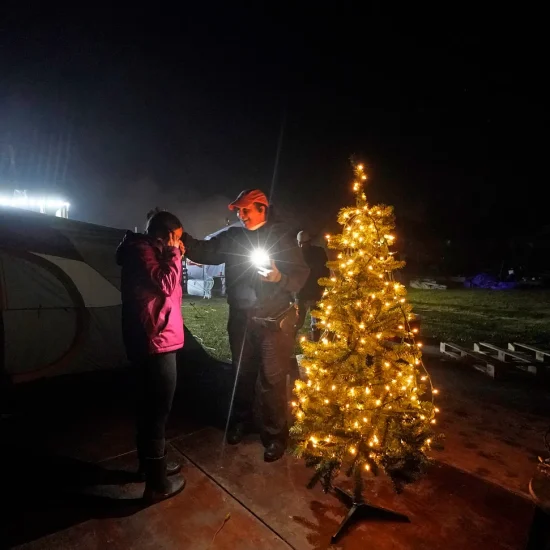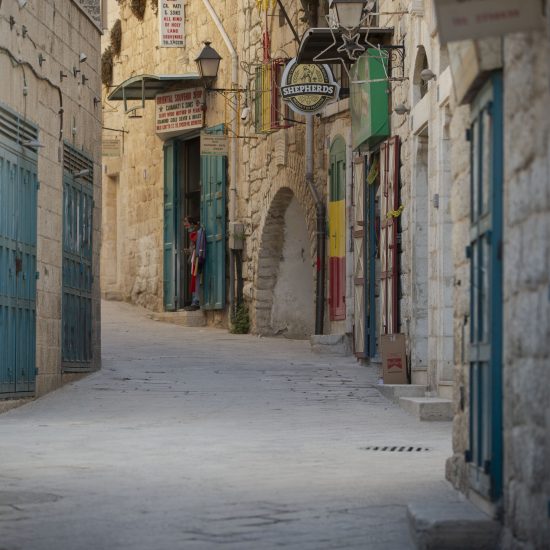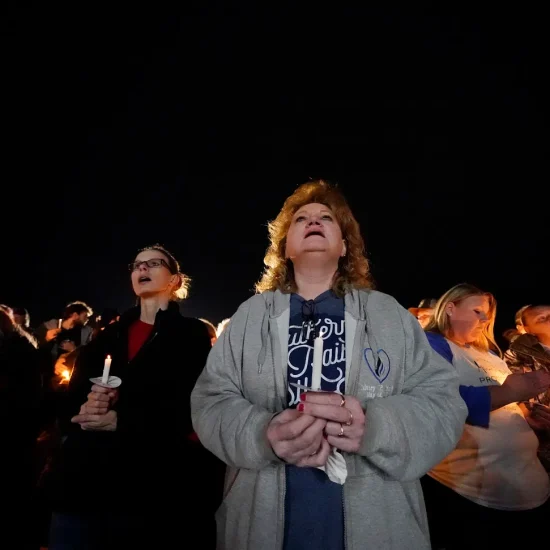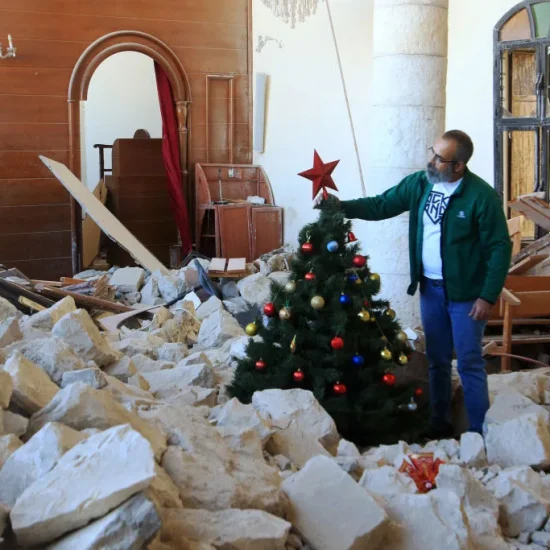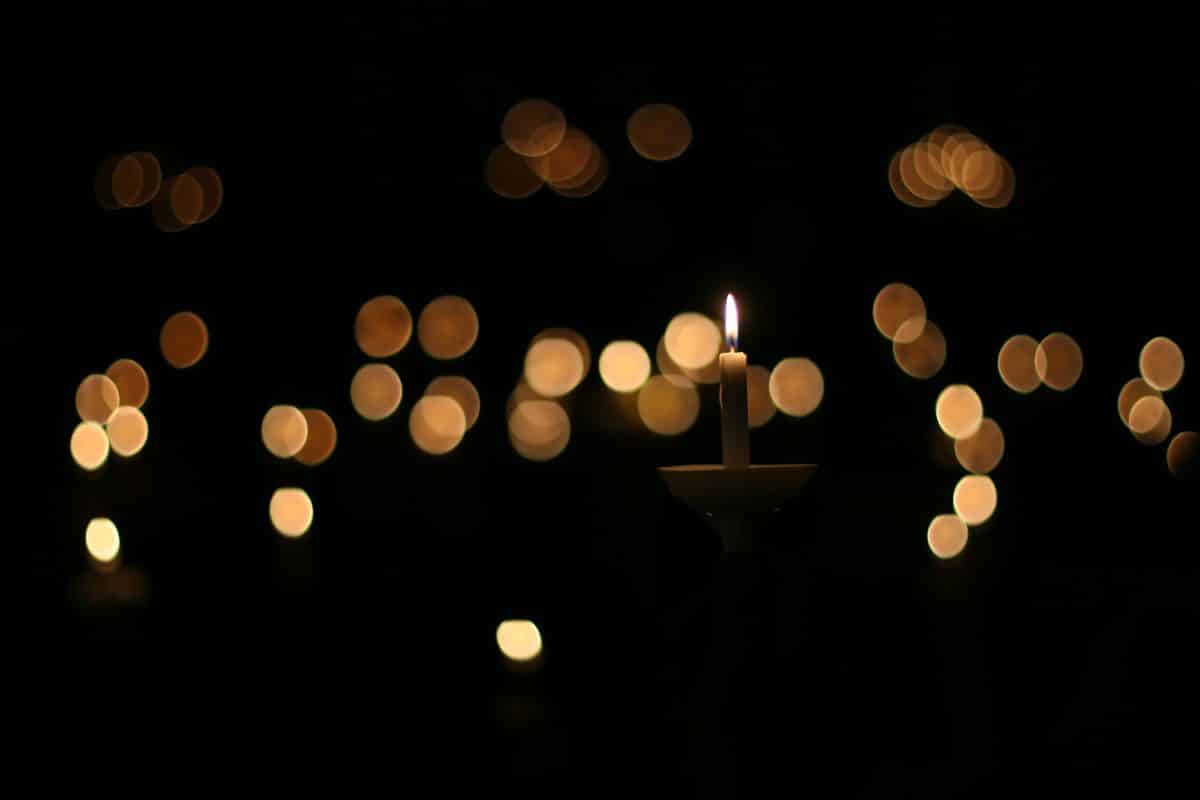
The time between blowing out the last candle after Silent Night is sung on Christmas eve and tucking children snug in their beds (with visions of sugar plums dancing in their heads) is often one of the most frenetic times of the year for parents of young children. Combining the confinement from a church service, hunger from a non-standard eating schedule, exhaustion from a day playing with cousins or special events, and excitement for the Christmas day to come leads to a whirlwind of emotions that drains many parents and children.

Sarah Blackwell
It was in the midst of one of these Christmas eve gauntlets years ago that my husband asked, “Where is the tent?” Where is the tent? I thought. Why on earth are you thinking about that? We have got to get kids fed, showered, calmed down, and to bed! I went about all these tasks hurriedly as he went off in the direction. What was the deal?
A little while later, after I had wrangled kids into pajamas, he came into the room and proclaimed, “We have to go on a journey to Bethlehem!” Quizzically, the boys and I looked at each other, but they, as always, were game for an adventure. They hunted around the house until they found the tent set up in the playroom.
As they approached it, they saw Elmo, the Backyardigans, some Beanie Babies, and a few other stuffed animals gathered around a baby doll swaddled in the middle. We had reached our own version of the stable in Bethlehem.
In we all climbed to read the account from Luke 2 of a baby born in both ordinary and extraordinary ways. As we huddled in the tent, I felt my entire body sigh; I was grateful for this holy pause. It was a chance to sit and appreciate with my family the uniqueness and mystery of the story of this special night in a way I had not yet been able in the hustle and bustle of Christmas eve activities.
Family traditions and rituals are an important part of faith formation for our children. Throughout the Bible, there are instructions to tell our children the story of God’s faithfulness. In Deuteronomy 4:9, the people are instructed to “take care and watch yourselves closely, so as neither to forget the things that your eyes have seen nor to let them slip from your mind all the days of your life; make them known to your children and your children’s children.” Simple remembrances and stories can connect us to those who have gone before us.
We can help children understand that the Bible is our family story full of complex people and the difficult decisions that they had to make. We can tell about how sometimes they got things wrong, and yet we see God’s unchanging love throughout the story. We can also include the stories and traditions of the church as it has spread around the world in the last 2000 years. The Lord has continued to work wonders in the lives of people up to the present age, and Psalm 78:4 says, “We will not hide them from their children; we will tell the coming generation the glorious deeds of the Lord, and his might, and the wonders he has done.” Our story continues to be written, and now we are all part of the crafting of the next chapter.
Traditions and rituals allow us to look back and appreciate what has come before as well as contemplate what our own legacy will be. One of my favorite moments of the entire year is standing with my family and church community as we sing Silent Night on Christmas Eve. The moment is moving for many reasons: the beauty of the candlelight penetrating the darkness, the voices raised together in song, the closeness of the bodies packed together in the church, and the excitement of Christmas’s arrival. It is a beautiful celebration of a birth that brought light into darkness.
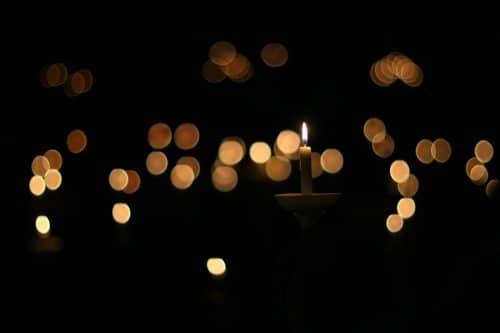
A few years ago, though, I was struck by a different significance to this moment. For it was not really one moment in time, but a moment that had been, and was being, lived over and over again in churches through the years and all over the world. Something about singing that song, on that night, connected me not only with my local church community, but with Christians around the world, across denominations, and through time (both past and future). How many people around the world were singing that song at this moment? How many people had sung it over time? Will it continue for generations? This symbolic act has held such meaning for so many people, that I was humbled and honored to be a part of it and grateful to be able to participate with my children.
Unfortunately, there are many traditions in the Christian church that can sometimes become rote or commonplace for us. We may say the Lord’s Prayer without really thinking of how those same words crossed the lips of our Savior, the disciples, Paul, the desert fathers and mothers, the monks and nuns of the middle ages, Luther, Dr. Martin Luther King, Jr., and Mother Teresa as well as countless faithful over the last 2000 years. One of my favorite verses in the New Testament is 2 Timothy 1:5: “I am reminded of your sincere faith, a faith that lived first in your grandmother Lois and your mother Eunice and now, I am sure, lives in you.”
Each generation has the honor and responsibility of passing along our “sincere faith” to the next generation. In this way, we begin to form the “cloud of witnesses” that testify to God’s faithfulness. The tools we can use to teach our faith include prayers, scripture, creeds, and hymns of tradition. We connect all Christians through our shared story.
Our church families may also have our own rites of passage—rituals and traditions that mark time help to form a family identity. Special events such as Baccalaureate services, Bible presentations, blessing new drivers, baby dedications, placing blooms on a flowering cross at Easter, a foot-washing service, or lighting an Advent wreath can all help to define a family of faith. One of my favorite things our congregation does each year is host a Christmas eve service for children where the 5th graders take the lead roles in the birth story, but every child that attends gets to choose to dress up like an animal, shepherd, star, angel or one of the magi.
At various parts of the service, different groups come forward to take their place in the story. It is chaotic, messy, loud, unrehearsed, and yet joyful and exuberant—the most authentic celebration of the season. The children are put into the tale to experience the anticipation of seeing the baby. The story is no longer words on a page, but a real-life experience which they anticipate year after year. It also shows that children have a special and important place in our church family since we allow them to lead and participate in this service.
Of course, family or community rituals and traditions need not be confined to the holiday season. These small acts can bind us together and give our children a strong sense of corporate identity. Having traditions for birthdays such as a special plate or book to be read each year show children the important part they play in our family. My own father still asks me every birthday if he can tell me about the night I was born. Traditions can also help mark time and give a sense of new beginnings or closure. Every time we cross state lines, someone will yell “Two states at once!” and everyone will put one hand forward and one backward as we cross the invisible boundary line.
In doing so, we mark significant points in our journey. We can also help children understand the idea of benediction to gain closure. Each year we learn about benediction by walking out one final time to the beach together at the end of vacation to say goodbye to the ocean. It is a simple act that allows us one more vacation moment together as a family as well as a time to grieve leaving one of our favorite places and our extended family.
Food is also part of the family story. Our holiday gatherings often include the same dishes passed down from generation to generation. With each comes a story of how it came into the family or a time when making it did not go so well. My favorite family food story is about the rolls that show up on our family Thanksgiving table whose recipe came from the mother of a Soviet spy. Using food to tell a story is a tradition that goes back to the Jewish Passover meal where each element had a symbolic meaning. In eating the food, the story of faith and family was repeated and shared with the next generation.
As with many things in my family, when we do things once, it often becomes a tradition. Each year, my husband at some point will slip away to get Bethlehem ready. Then there is a sense of anticipation as the boys seek the manger scene. My favorite years have been when the weather has been clear (and not completely freezing), and we have found Bethlehem outdoors under a beautiful moon. Sitting outdoors, huddled together in the dark, we can sense the awe and wonder (and chill) of that first Christmas eve.
This Christmas, maybe we should not focus on the flashy lights of Christmas spectaculars or rushing from event to event in the hopes of making some “Christmas magic.” Rather, maybe it is time to gather in those closest to us in a simple act of remembrance that might just become a tradition. Remember Joel’s encouragement: “Tell your children of it, and let your children tell their children, and their children another generation” (Joel 1:3).
Let the greatest gift we give our families this season be the gift of story, and may it dwell deep within them.
Sarah Blackwell is a contributing writer at Word&Way and a 2020 graduate of the Gardner-Webb School of Divinity. She is a former deacon and volunteers with youth and young adults at Providence Baptist Church in Charlotte, North Carolina. This holiday season she will be engaged in many family traditions including baking iced sugar cookies and gooey butter cake, making her children pose for the “Christmas Surprise Picture” and the “Upside-Down Christmas Picture,” singing “Happy Birthday” to Jesus, and, of course, finding Bethlehem. Follow her writings at proximitytolove.org.

